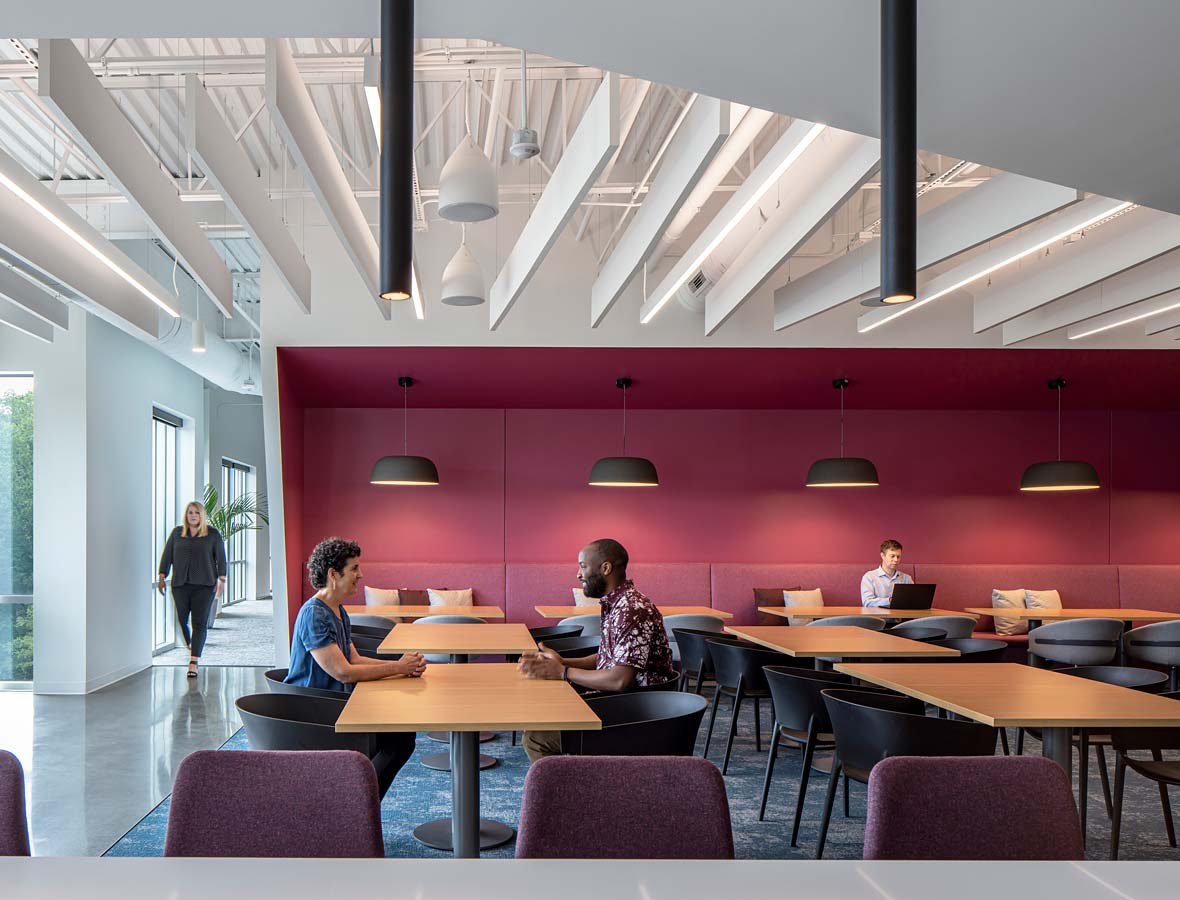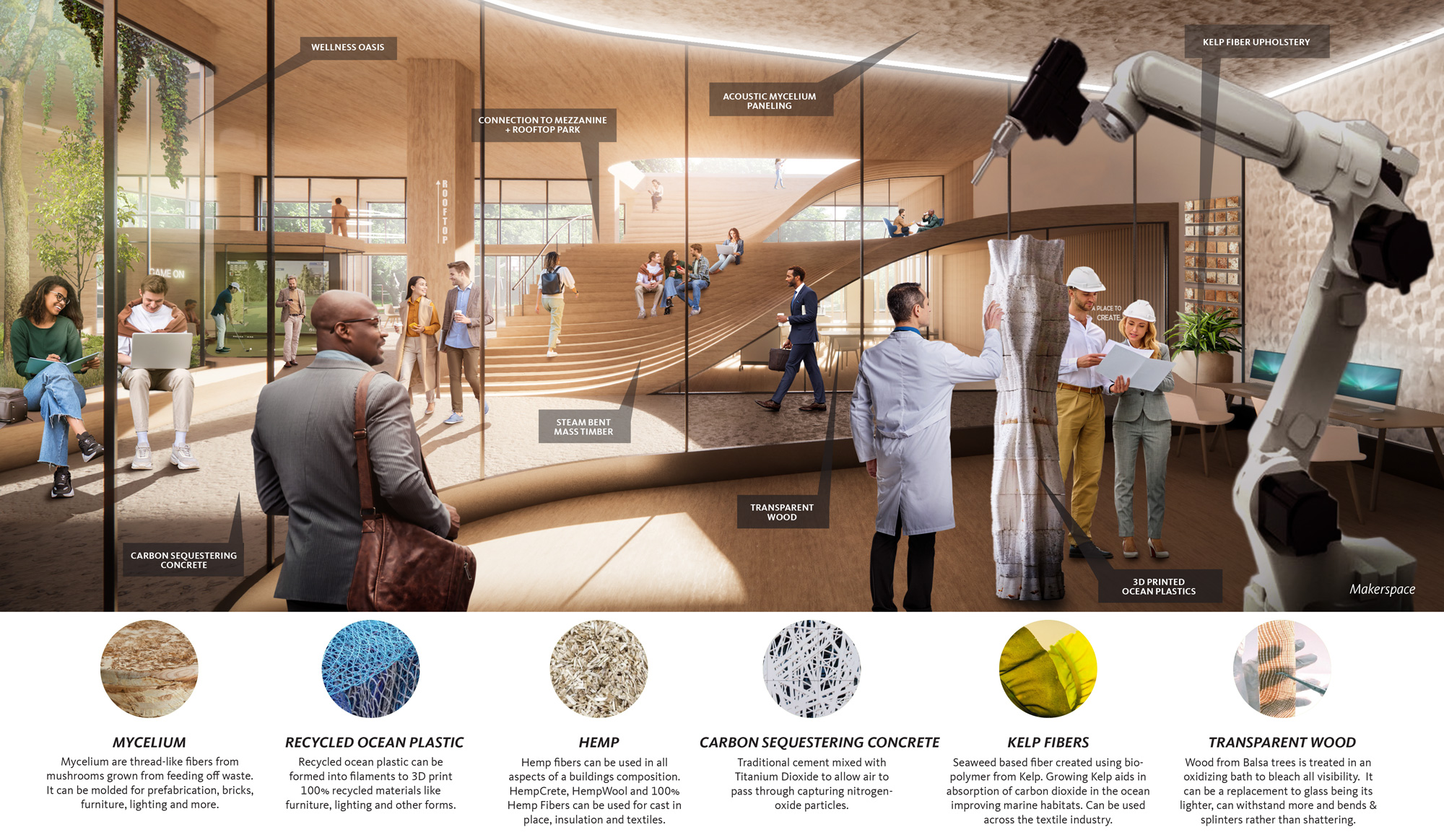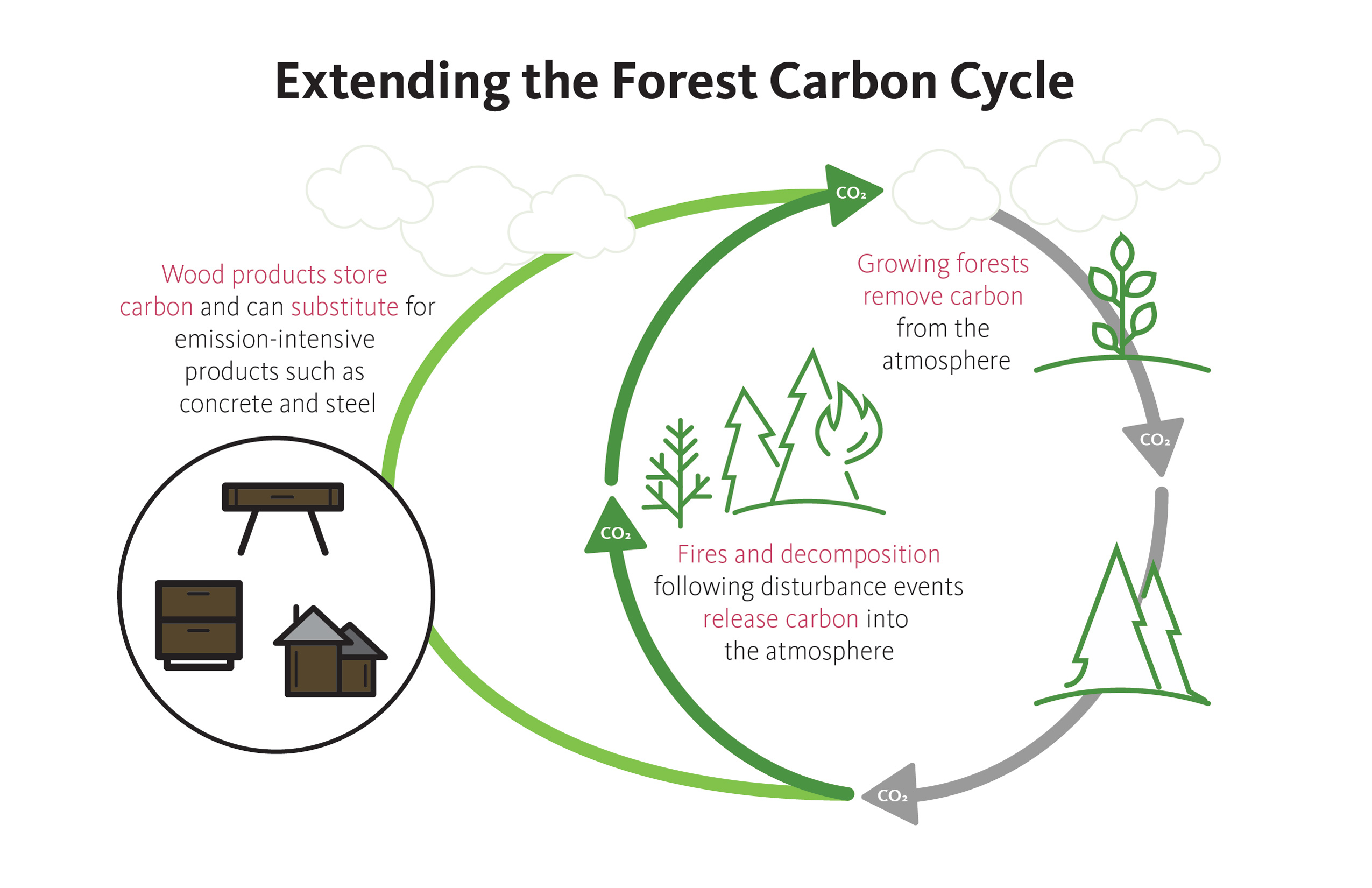The Biogenic Materials Revolution Has Begun and Mass Timber Is Leading the Way
April 26, 2023 | By Erik Barth
Over the next 40 years, the global construction rate is predicted to reach approximately one New York City built every month. This construction boom driven by urbanization and population growth will require a staggering quantity of building materials. Carbon emissions associated with the procurement, manufacturing, and installation of building materials account for approximately 15% of annual global carbon emissions. As the grid and building systems are electrified, the relative emissions associated with building materials compared to building operations will grow even higher. According to the 2022 IPCC report, the next 10 years are a critical window to keep global temperature change under 1.5°C. Within that window, embodied carbon in building materials will account for approximately 75% of all carbon emissions associated with new construction.
To add to this challenge, the current global system of material use is linear and exploitive. Materials are extracted from the environment and used in a variety of ways that eventually transform the raw resource into a toxic waste product. How can those of us in the building industry redesign our interactions with materials to address the climate crisis while also meeting the vast global demand for new built space?

Closing the Loop
As practitioners of the built environment, we have the tremendous opportunity to reimagine the linear global building materials paradigm by leveraging the principles of regeneration to create closed loop systems. The principle of regeneration implies wholeness, resilience, and health through the act of renewal. Regenerative agriculture is an applied example of these principles, where farmers may avoid short-term gain through exploitive practices for long-term health by fostering a mutually beneficial web of species and natural processes on their land.
Similarly, for a building material to be regenerative it must be renewable and lead to overall systemic health. Biogenic materials, or materials that are derived from things that are grown, are regenerative, closed loop material options. Bio-based materials are renewable because they don’t rely on a limited resource, do not require large quantities of energy to produce, and can naturally be altered into another form useful to life.

It’s helpful to understand the framework and opportunity for biogenic materials through the example of plastics. Plastics are a petroleum byproduct that is wreaking havoc on our oceans and bodies through bioaccumulating microplastics. Although there is an opportunity to recycle non-renewable materials like plastics, there will always be a net loss or inefficiency aggregated by use over time. Recent studies have shown that roughly globally only 5-10% of plastics are recycled in a fictional ‘closed loop’ material system. After the recycling process, material quality decreases and accounts for further inefficiency.
Bioplastics made from biomass have been offered as an alternative to traditional plastics. While bio-based plastic products present their own environmental challenges, they ultimately do not rely on a non-renewable resource like petroleum and point towards a future system of regenerative materials. The real crux of why plastic replacements have not been implemented is the sheer scale and complexity of the manufacturing and political infrastructure that has built up over the last 70 years around plastics and petroleum.

Mass Timber: The Biogenic Materials Champion
Mass timber is compelling because it is a low-carbon, biogenic material that breaks through the systemic barriers that stand in the way of the radical, immediate materials change we need. Like the plastics industry, the building industry is slow-moving, relatively conservative, and stuck on a diet of toxic materials with short lifespans like petroleum byproducts or traditional concrete, steel, and glass.
Despite these challenges, mass timber use in the construction industry has grown at a staggering rate. In the U.S, total mass timber projects have exponentially grown from a handful of projects in the mid-1990s to over 800 completed projects today. An industry-wide ambitious and proactive approach to testing and code updates have been instrumental to this growth. Cross laminated timber was first recognized by the International Building Code in 2015. In the 2021 edition of the International Building Code (IBC) there are now three entirely new construction subtypes (Type IV-A, B, C) that codify the rigorous fire and safety testing conducted and allow for significant advances in mass timber buildings.
The forestry and conservation industry has been intimately involved in this development, supporting testing and educating industry stakeholders. Architects and designers have also played an integral role through advocacy, education, and implementation of mass timber projects. Ultimately, building owners are seeing the value in utilizing a regenerative biomaterial like mass timber and are enabling further growth through investment and built work. This unique model of cross-industry collaboration and advocacy for a new material has sped mass timber through otherwise insurmountable barriers to be one of the fastest growing materials used in the market today.
From a carbon emissions standpoint, materials like steel and concrete that are extracted from non-renewable elements simply cannot compete with materials like mass timber that are biogenically sourced. Mass timber structural systems in buildings are typically 50-60% less carbon intensive than concrete or steel systems when analyzed within the boundaries of a typical life cycle assessment. If carbon sequestration from trees used in mass timber building components is accounted for (pre-A1-3 stage in a lifecycle assessment), that relative decrease drops to 80-90%.

Sequestration is the secret sauce to carbon reduction – it’s the low-tech, low-cost solution provided by nature through photosynthesis to pull carbon out of the atmosphere and store it in biomass. We can extend the closed-loop cycle associated with the natural carbon sequestration cycle by creating bio-based products that act as a ‘sink’ to store carbon in building products.
This process of harvesting, manufacturing, and assembling sustainably sourced forest products like mass timber is an extension of the regenerative, closed-loop carbon cycle of forest ecosystems. Carbon from the atmosphere is effectively locked into mass timber structures and stored in buildings for many years. As an added benefit, the lifecycle of mass timber buildings is significantly longer (250+ years) than a light wood or metal building system (50-60 years). Mass timber structural elements can also be easily disassembled and recycled for future use, as they are mechanically fastened and not welded or molded together.
Mass timber is only the forerunner in the biogenic material revolution. As it becomes more mainstream, we should follow mass timber’s example and use cross-industry collaboration, advocacy, and education to promote the increasing array of new biomaterials in the building industry. Hempcrete, mycelium finishes, cellulose glazing, and bioresin finishes are all examples of biogenic materials that face barriers of legislation, testing, and public perception. The road has been paved by mass timber to enable these existing and future biogenic materials to be widely accepted and implemented. The era of linear, extractive systems is over. The future of regenerative, circular material systems has arrived. Let’s not miss it.
For media inquiries, email .

